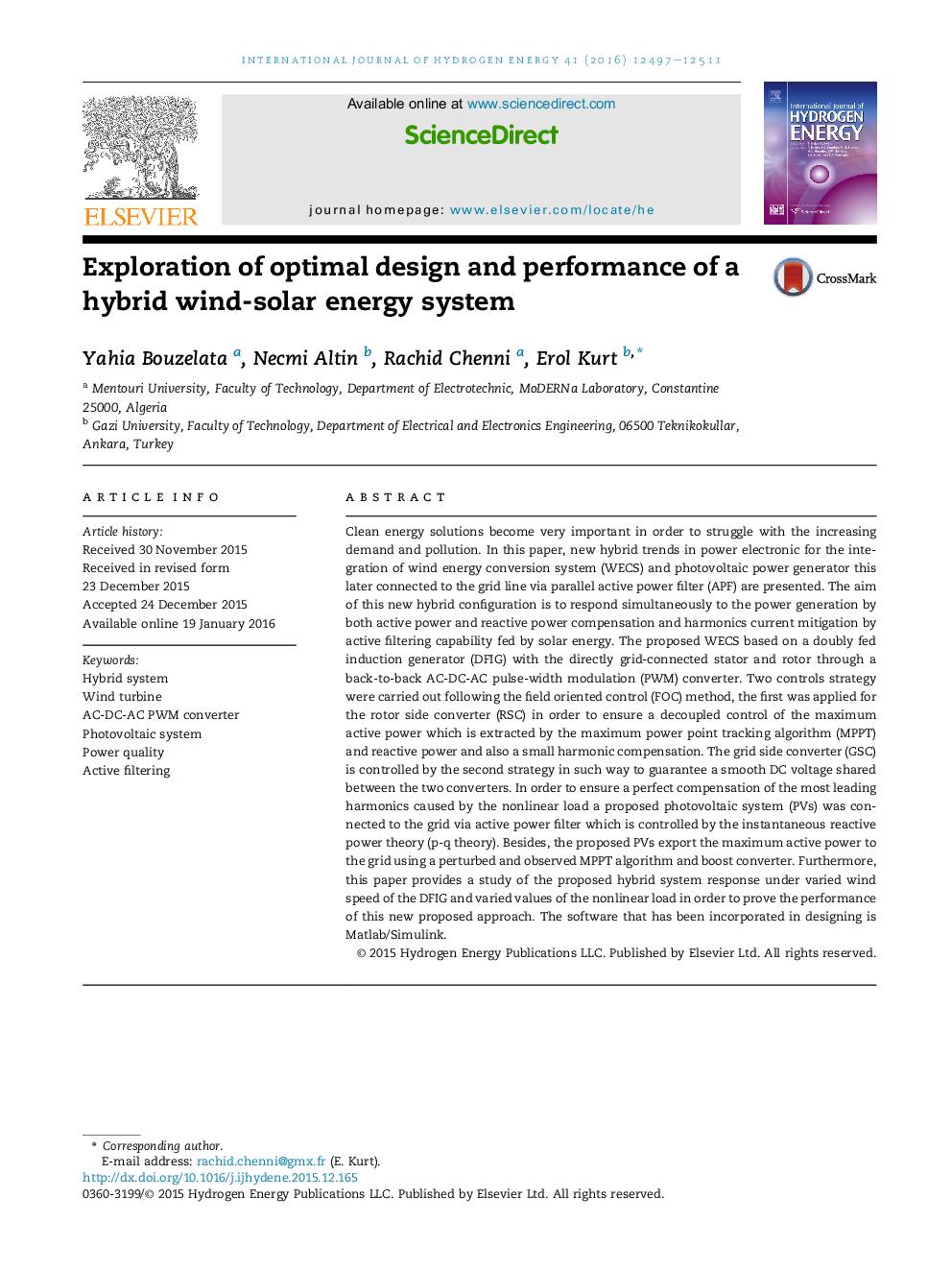| Article ID | Journal | Published Year | Pages | File Type |
|---|---|---|---|---|
| 1268369 | International Journal of Hydrogen Energy | 2016 | 15 Pages |
•A new hybrid system design and modeling are carried out.•The system includes the combination of solar and wind systems.•A grid interaction unit is added to the hybrid system.•Active and reactive power compensations and harmonics current mitigation are included.•A good total harmonic distortion (THD) value is observed although a nonlinear load is attached.
Clean energy solutions become very important in order to struggle with the increasing demand and pollution. In this paper, new hybrid trends in power electronic for the integration of wind energy conversion system (WECS) and photovoltaic power generator this later connected to the grid line via parallel active power filter (APF) are presented. The aim of this new hybrid configuration is to respond simultaneously to the power generation by both active power and reactive power compensation and harmonics current mitigation by active filtering capability fed by solar energy. The proposed WECS based on a doubly fed induction generator (DFIG) with the directly grid-connected stator and rotor through a back-to-back AC-DC-AC pulse-width modulation (PWM) converter. Two controls strategy were carried out following the field oriented control (FOC) method, the first was applied for the rotor side converter (RSC) in order to ensure a decoupled control of the maximum active power which is extracted by the maximum power point tracking algorithm (MPPT) and reactive power and also a small harmonic compensation. The grid side converter (GSC) is controlled by the second strategy in such way to guarantee a smooth DC voltage shared between the two converters. In order to ensure a perfect compensation of the most leading harmonics caused by the nonlinear load a proposed photovoltaic system (PVs) was connected to the grid via active power filter which is controlled by the instantaneous reactive power theory (p-q theory). Besides, the proposed PVs export the maximum active power to the grid using a perturbed and observed MPPT algorithm and boost converter. Furthermore, this paper provides a study of the proposed hybrid system response under varied wind speed of the DFIG and varied values of the nonlinear load in order to prove the performance of this new proposed approach. The software that has been incorporated in designing is Matlab/Simulink.
